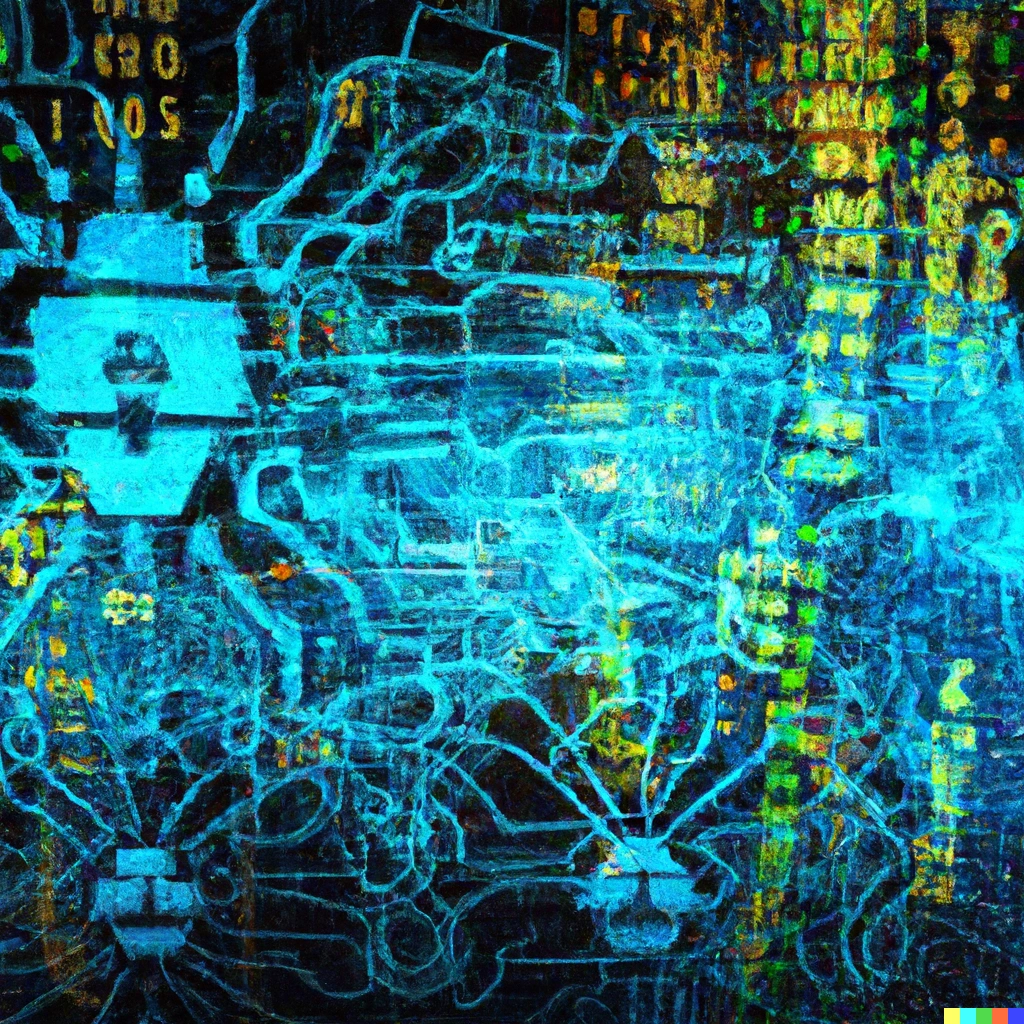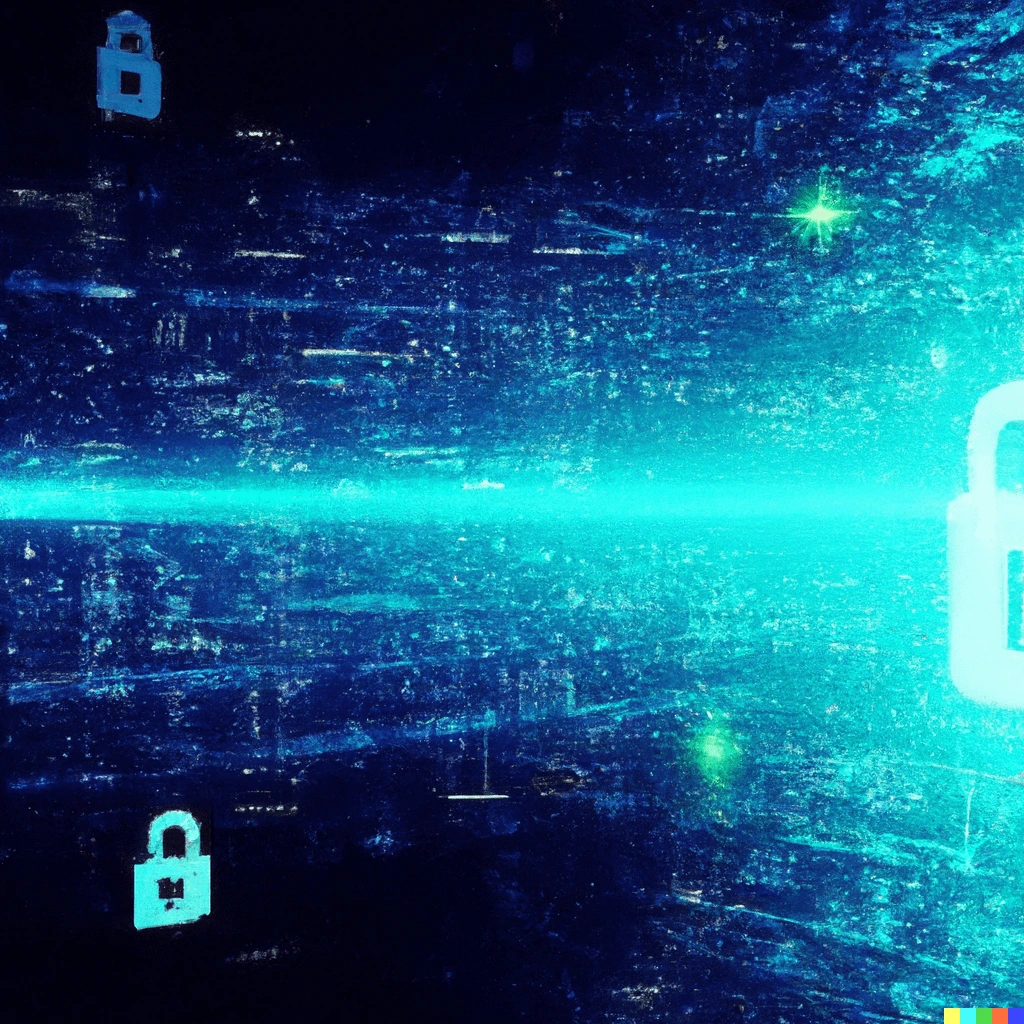Safeguarding the Future: Investigating the Interaction of Cybers
Introduction
Cybersecurity has grown to be a crucial concern in today's society, with the rising number of cyber assaults on organizations and people. As a consequence, it has become vital for computer science workers to comprehend the relevance of cybercrime and the tactics for securing digital assets. The influence of cybersecurity on computer science cannot be overestimated since it has prompted the creation of new technologies and approaches for securing digital assets.
One of the key tactics for preserving digital assets is the adoption of comprehensive security measures. This involves the usage of firewalls, anti-virus tools, and breach-tracking systems. In addition, encryption is a crucial approach for securing data and preventing illegal access. It is vital to remain up to date with both the newest cybersecurity dangers and the tactics for mitigating them. This information may be utilized to design more secure systems and defend digital content from cyber threats.

Significance of Cybersecurity in data science
Cybersecurity is vital in computer science owing to the rising amount of information security and data breaches. A single cyber-attack may have disastrous implications for corporations, organizations, and people. The consequences of cyber-attacks may vary from theft of confidential documents to economic damage and bad publicity. Hence, cybersecurity ought to be a major concern for computer science workers, corporations, and organizations.
Techniques for safeguarding digital assets
To secure digital assets, it's vital to deploy efficient security precautions and adhere to industry standards. Some of the usual tactics for securing digital assets include adopting strong passwords, employing multi-factor verification, encrypting data, and deploying firewalls. Moreover, frequent software upgrades and backups may also aid in securing digital assets.
Definition of cybersecurity
Cybersecurity may be described as the collection of procedures, policies, technologies, and tactics used to secure computer networks, networks, and digital content against unauthorized users, theft, damage, or any other hostile action. It comprises a broad range of safety precautions, including encrypted data, firewalls, systems for detecting and preventing intrusions, multi-factor authentication, access restrictions, incident management, and recovery procedures.
Cybersecurity is a continually developing subject that demands a detailed awareness of the newest attacks, loopholes, and attack methodologies. It is motivated by the need to balance security with accessibility and to guarantee that the secrecy, authenticity, and accessibility of technological assets are preserved at all times.
Varieties of cybersecurity threats
There are various forms of cybersecurity concerns that might damage computer science. They include:
Malware: Malware is a sort of software that is meant to damage or disrupt computer servers. Malware may include viruses, worms, and Trojans.
Phishing: Phishing is a social manipulation method intended to deceive people into providing confidential material, such as passwords and credit card information.
Denial of Service (DoS) assaults: DoS attacks are meant to overload networks and computer systems with traffic, rendering them inaccessible to users.
Advanced Persistent Threats (APTs): APTs are advanced cyber assaults that are meant to get access to sensitive information over a prolonged time.
How cybersecurity hazards influence computer science
With the exponential expansion of technology, the incidence of cyber assaults and threats has grown drastically, and the necessity for effective security measures has never been higher. This is especially true in the area of computer science, where specialists are responsible for inventing and deploying the technology that supports our digital world. In the context of computer science, cybersecurity concerns may lead to:
Intellectual property theft: Cyber assaults may result in the loss of intellectual property, such as sensitive information, patents, and copyrights.
Disruption of vital systems: Cyber assaults may interrupt key computer systems, including those utilized in medicine, transportation, and banking.
Financial loss: Cyber assaults may result in financial loss for corporations, people, and governments.
Statistics on cybersecurity breaches
According to IBM's 2022 Cost of a Data Breach research, 83% of businesses would have more than one data breach. The cost of a data breach in the United States is USD 5.09 million more than the worldwide average. Healthcare has the greatest average cost of any sector for a data breach. The most prevalent cause of a data breach was stolen or compromised credentials, which took the longest to discover. It took an average of 277 days in 2022 to detect and control a brehighestach but reducing this time to 200 days or fewer may save money.
According to the 2019 Verizon Data Breach Investigations Report, cybercriminals often target small companies because they have a false feeling of security and do not implement necessary protections. Small firms accounted for 43% of all data breaches, and 60% of small enterprises that experience a cyberattack fail within six months. The average cost of recovering from a ransomware attack in 2019 was $84,000. Small companies lose credit card information and other crucial client data during a phishing, malware, or ransomware assault, as well as consumer trust. Half of the small firms claimed it takes 24 hours or longer to recover from a cyberattack due to a lack of readiness. In a world that moves at Internet speed, it is an eternity that many small firms never recover from.

Varieties of security protocols used in computer science
There are various sorts of security methods used in computer science to secure digital assets. These metrics include:
Encryption - Encryption is a means of transforming sensitive information into a ciphertext, making it hard for unauthorized people to access it. There are two basic forms of encryption: asymmetric and symmetric encryption.
Firewalls - Firewalls are utilized to monitor and prohibit illegal computer system access. They are vital for defending computer networks from external dangers such as viruses and hacking attempts.
Access Management - Access management is a means of controlling the dissemination of confidential information by enabling only authorized people to access it. Access control methods could include password and username variations, biometric authentication, or sim card authentication.
Antivirus Software - Antivirus software is used to identify and remove viruses and other harmful software from computer systems.
Best approaches for safeguarding digital assets in computer science
To preserve digital assets in computer science, it's vital to follow best practices. These practices include:
Frequent updates, as well as patches - Regular patches and updates to computer systems and software, are important to guarantee that unpatched vulnerabilities are addressed.
Strong Passwords - Complex passwords are vital for preventing unwanted access to electronic devices and data. A good password should be a least eight characters and comprise a variety of capital and lowercase letters, digits, and symbols.
Data Backup - Frequent data backup is required to guarantee that data can be retrieved in event of a cyber threat or data loss. Data should be backed up periodically, ideally to an offsite location, to avoid data loss in case of a catastrophic calamity.
Employee Training - Employee training is vital for developing knowledge about cybersecurity threats and recommended practices. Workers should be taught how to recognize and react to possible cyber-attacks and how to apply best practices for securing digital assets.
Real-life examples of effective digital asset protection methods
There are numerous real-life instances of effective digital asset security measures. One such example is the adoption of multi-factor verification by several online sites. Multi-factor authentication offers an extra degree of protection by forcing users to give additional information beyond simply a password. This extra information might be a fingerprint, facial detection, or a security code transmitted to a mobile phone.
Another example is the usage of encryption by several messaging applications such as WhatsApp and Signal. These applications employ end-to-end encryption, which guarantees that communications are only readable by the sender and receiver. This makes it difficult for other parties to intercept and read the communications.
A third example of an effective digital asset security technique is the deployment of firewalls by several firms. A firewall is a network security device that monitors and regulates both inbound and outbound network traffic based on established security rules. By doing so, it prevents unwanted access to important data and applications.
Another key tactic is frequent software upgrades. Many operating platforms and software packages need periodic upgrades to repair risks that may be exploited by hackers. For instance, Microsoft publishes security updates every month to remedy any security holes detected in its operating system. Similarly, antivirus software routinely updates its virus definitions to guard against new and emerging threats.
Businesses and organizations also employ access restrictions to secure their digital assets. Access restrictions limit the use of private information and applications to just authorized individuals. This guarantees that only those who require permission to access particular information or apps have the authority to do so.
In addition, many firms use the skills of cyber security specialists to secure their digital assets. These specialists employ a variety of technologies and tactics to protect data and data breaches. For instance, they may utilize intrusion prevention tools to track network traffic and identify any unusual activities.

Safeguarding Success: the significance of Cybersecurity in computer science online academic programs
While Canada is widely regarded for its top-notch computer programming programs, it is no surprise that the number of online degree programs provided in computer science has greatly expanded in recent years. With the heightened concern of cybersecurity threats, students need to study computer science online degree programs in Canada to have a good background in cybersecurity. Sadly, the shortage of cybersecurity specialists in Canada is largely owing to the insufficiency of extensive cybersecurity education and training options. To solve this problem, it is vital to promote accessible cybersecurity educational opportunities at universities in Canada, offer money for cybersecurity research, and raise cybersecurity consciousness among learners and the broader population.
To increase cybersecurity teaching in computer science online degree programs, numerous techniques may be adopted. One of these options is to enhance access to cybersecurity courses and programs at an online setting or university throughout Canada. By doing so, students will obtain a broader grasp of cybersecurity and become better equipped to seek professions in this industry. Another solution that might be done is to offer funds for cybersecurity research. Research is crucial for creating new cybersecurity technologies and approaches, and funding will allow universities and researchers to investigate novel solutions to cybersecurity concerns. Finally, it is necessary to promote awareness about cybersecurity amongst students and the larger community. This comprises teaching students about appropriate cybersecurity practices and equipping them with resources to safeguard their digital assets.
Conclusion
In conclusion, cybersecurity has grown into a fundamental component of computer science owing to the rising level of sophistication and complexity of cyber threats. Cyber assaults may have catastrophic implications, ranging from loss of sensitive data to financial loss and reputational harm. Safeguarding digital assets is vital for people and enterprises alike, and measures such as strong passwords, multi-factor authentication, encryption, and firewalls may be utilized to avoid cyber assaults. Moreover, frequent software upgrades and backups may also aid in securing digital assets. The consequences of cybersecurity breaches may be severe and can result in intellectual property theft, interruption of vital systems, and financial loss. Cyber assaults in Canada are rising in frequency, complexity, and impact, making it more necessary than ever to deploy strong cybersecurity measures. To safeguard digital assets in computer science, it is vital to follow best practices, including frequent upgrades and backups, access restrictions, encryption, and the use of antivirus software. Therefore, cybersecurity instruction in computer science online degree programs in Canada is crucial to provide students with the required skills to confront the difficulties presented by cyber-attacks and secure digital assets efficiently. By adopting effective cybersecurity measures and best practices, people and businesses may decrease the risk of cyber-attacks and secure their digital assets.
Like this project
Posted Apr 8, 2023
To increase cybersecurity teaching in computer science online degree programs, numerous techniques may be adopted







